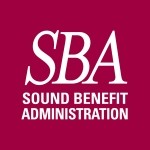You know we love our alphabet-soup acronyms, so today we’re going to talk about DCAPs. What the heck is a DCAP? It’s the Dependent Care Assistance Program under a Flexible Spending Account (FSA!). Recently, I struggled with the FSA renewal of a tech client where many employees are paid six-figure annual salaries and are considered Highly Compensated Employees (HCEs). It was an uncomfortable conversation, for me and the HR Manager, telling two HCEs they could not participate in the DCAP part of the plan due to non-discrimination testing. Unfortunately, this conversation is more common than you would think in this situation and often leaves many HCEs feeling like they are the group feeling discriminated against.
Quick review of non-discrimination testing:
The Core Concepts for testing FSA plans are pretty straightforward: “Cafeteria plans (FSAs) cannot discriminate in favor of highly compensated employees.” Of course, the main reason is to encourage employers to provide benefits to their rank-and-file employees. And, while Congress did not object to letting an employer’s executives get some tax benefits as a byproduct, it wanted to make sure that providing benefits to these individuals was not the primary focus of the program. These tests have been in place for decades and often times the impact to HCEs is minimal or can be mitigated, but a DCAP is a particular problem.
Why is an HCE in a DCAP more likely to be told they can’t participate?
While there are several non-discrimination hoops an FSA must jump through, the main nondiscrimination test that regularly fails when there are too many HCEs is the 55% Average Benefits Test. This test only applies to the DCAP portion of the FSA plan. To pass this test, the average dollar amount of benefits elected by non-highly compensated employees must be at least 55% of the average dollar amount of benefits elected by highly compensated employees.
Let’s look at an example:
- HCEs aggregate elections are $10,000 to the dependent care portion of the plan and there are five highly compensated employees in the company.
- Non-highly compensated employees elect $19,500 to the DCAP portion of the plan and there are 13 non-HCs.
- The HCE average dollar amount is $2,000 ($10,000/5).
- The non-HCE average dollar amount is $1,500 ($19,500/13).
The average dollar amount of benefits elected by non-HCs is 75% of the average dollar amount of benefits elected by HCs ($1,500/$2,000). In this example, the DCAP portion of the FSA plan passes the 55% Average Benefits test.
My tech group was not so lucky. It ended up having 21 HCE’s with two of them wanting to do DCAP. They had 122 non-HCs with only 5 people wanting to do DCAP. The ratio was $10,000/21 for HCE and $12,130/122 for non-HCE. It failed miserably at 21% because too few of the non-HCEs had elected to participate. And, as a result, we had to tell both the HCEs they could not participate.
What are the alternatives?
The sad moral to this story is that there isn’t much a company can do to mitigate this problem other than hiring more rank-and-file employees with children in daycare. And, for a company with a disproportionate number of HCEs looking to add a DCAP to their FSA, best advice is to be up front and warn the top dogs that this might not be a benefit they can actually benefit from.
